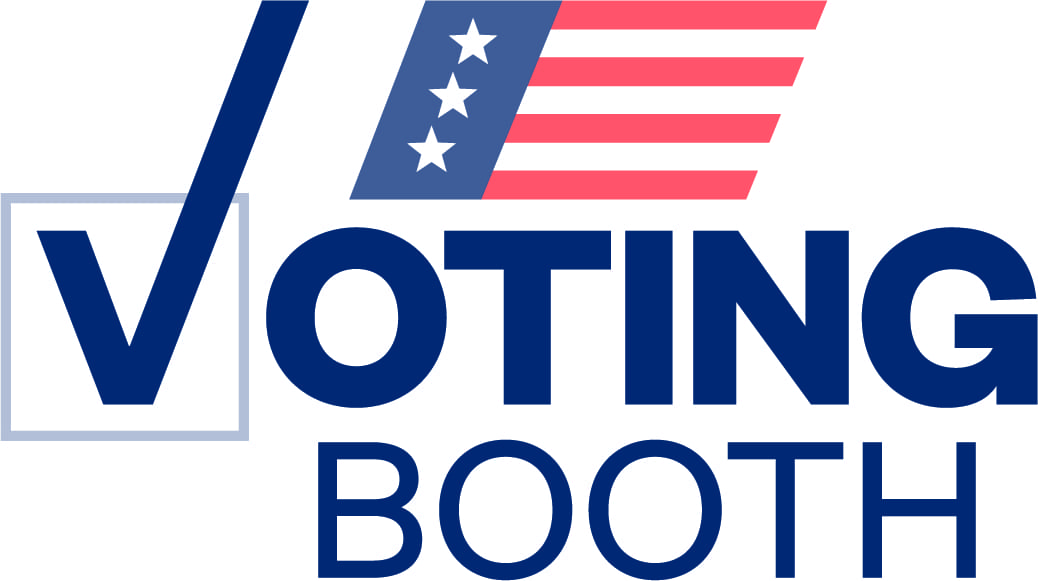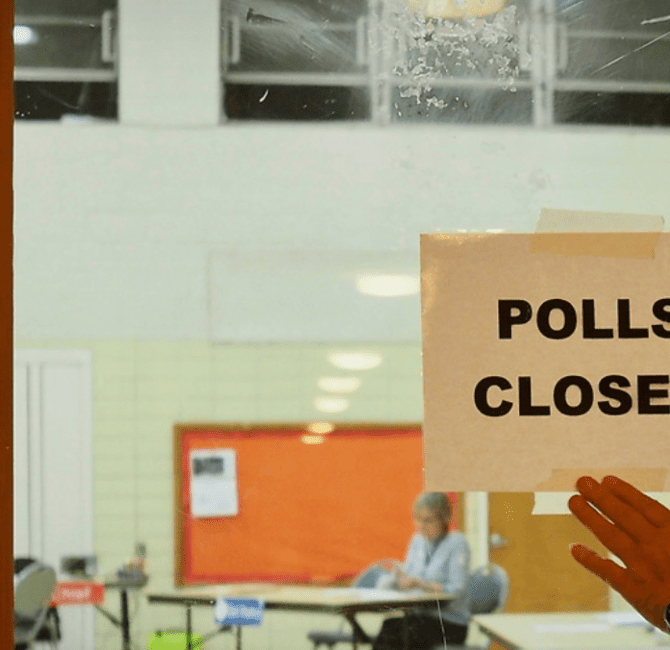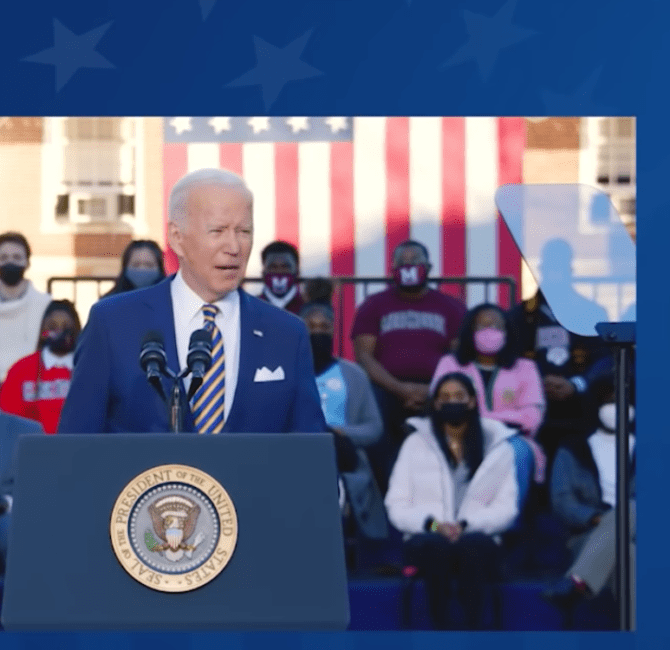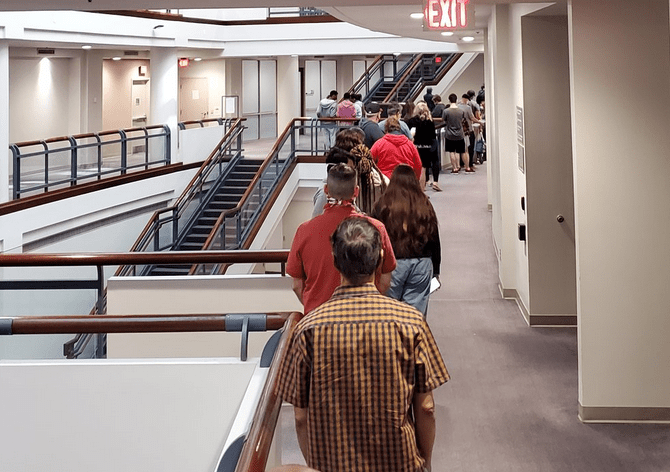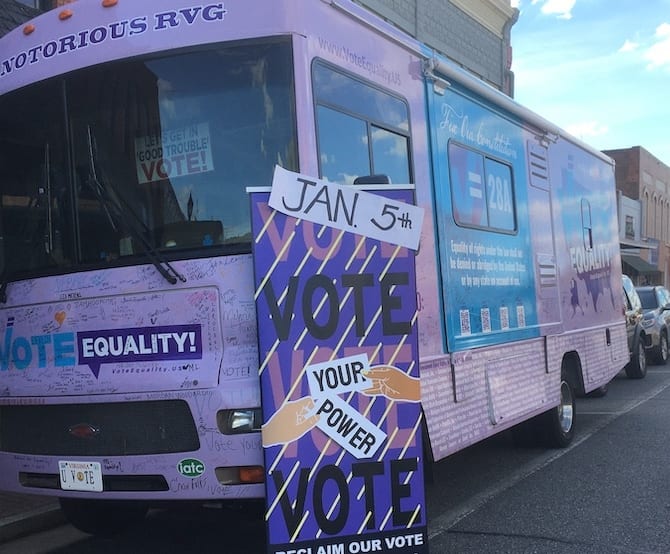Be Aware. This is a Trauma Election. What You Should Know.

(U.S. Capitol Police. Photo Credit: https://www.uscp.gov/)
Post-convention, Joe Biden and Kamala Harris are looking very strong on their path to defeating Donald Trump in November. Polls have Biden and Harris ahead both nationwide and in the key states they have to win to come out on top in the Electoral College.
Still, the positive polls only mean anything if voters turn out in sufficient numbers, especially where it counts most. Which is why I worry about the mental health of many voters. Because make no mistake; the 2020 election is a trauma election.
My goal is to raise consciousness about the mental state of voters in America, particularly Democratic voters. Many of us have been reeling, beginning with Trump’s shocking election and continuing throughout his abusive presidency, where his bullying has triggered memories of earlier abuse and neglect for large numbers of people.
We have never remotely had an election where the President’s sanity is routinely questioned by mental health professionals while a pandemic is leaving tens of millions unemployed and without resources to hang onto their homes. Add in the media’s role in amplifying Trump’s daily efforts to subvert confidence in voting with lies and disinformation, and you have a powerful recipe for sabotaging hope.
For large numbers of the public, issues of trauma, and mental health will affect how they vote, whether they vote, and whether they have confidence that their vote will be counted. It will also affect voter enthusiasm and commitment, including who volunteers in campaigns. All of us working to “get out the vote” will gain from a heightened awareness of voters’ emotional issues. We need to take care of ourselves and each other, so the constant attempt by Trump to create chaos and uncertainty is met with clarity of purpose. Already roughly 100 million eligible voters do not vote. We want that number to shrink, not increase.
As we contemplate the election and what we can do to help, we have to keep in mind the array of stressors facing so many citizens. The world is coping with a new and deadly contagion that spreads, often invisibly, from everyday human contact. Job losses are endemic. People who still have jobs too often face daily, repeated chances of exposure that could endanger themselves and their families. Parents struggle to balance work with their children’s needs for full-time care. School closures leave them responsible for the bulk of their children’s education. These pressures inevitably create chronic stress. For many, they become traumatic, or they trigger earlier trauma.
Overall, the last decade has witnessed an increasing recognition that social determinants such as poverty, political violence, racism, gender-based violence, etc. drive the mental health outcomes of populations. This approach was recently presented in the latest U.N. report, which condemned the continuous individualization of suffering that ignores such material and practical dimensions of human distress. Such suffering has also created remarkable resilience in communities of color, but that resilience is being sorely taxed by their overexposure to the dangers of Covid-19, not to mention a host of other factors, current and historical.
The persistence of racism and white supremacy in American society are underlying factors in voting habits and feelings of hope versus despair. Patterns of racism follow an historical line from slavery to Jim Crow through many forms of racially based violence, followed by mass incarceration, and much else along the way. Add in Trump’s aggressive use of the birther lie against Obama, followed by many voting for Trump as a response to the Obama presidency, and we can see the persistent backlash to racial progress. Anger at police violence against people of color has been a powerful motivator with massive protests empowering the movement for change represented by Black Lives Matter. Nevertheless, heading into the election, the history of the suppression of the Black vote, along with backlash reminds us of what the legal scholar Derrick Bell, calls “the permanence of racism.”
There is a parallel dichotomy with #MeToo movement. Women have been collectively empowered by effectively holding men accountable for their behavior in the media, the arts and in corporate settings. Nevertheless, Donald Trump, accused of abuse by at least 20 women, dominates the public discourse, using fear and outright cruelty to try to get reelected, triggering trauma along the way.
Dramatic Rise in Depression, Anxiety and Loneliness
Long before this election, trauma and PTSD were widespread in the U.S. Much of the trauma is from adverse childhood experiences — experiences of family violence, of sexual and physical abuse, of abandonment or divorce, of addiction and mental illness. Large surveys have demonstrated the extent of these childhood traumas, known as ACEs (Adverse Childhood Experiences), across race and class lines. As mentioned, there are also traumas of racism, and sexual and gender prejudice. Stress and trauma show their effects in widespread depression, anxiety, addiction, and suicide, as well as domestic and interpersonal violence.
Long-term use of antidepressants is increasing in the United States, a new analysis of federal data by the New York Times shows. Almost 25 million adults have been taking antidepressants for at least 2 years, a 60% increase since 2010.
The arrival of the COVID 19 virus has increased the use of drugs for depression and anxiety. “Express Scripts, a pharmacy benefit manager owned by Cigna, says prescriptions for anti-anxiety medications rose 34.1% between mid-February and mid-March, while prescriptions for antidepressants and sleep medications increased 18.6% and 14.8%, respectively.
According to the Wall Street Journal:
“Health concerns, social isolation and the stress of job losses are taking a toll on people’s well-being. More than one-third of Americans say the pandemic is having a “serious impact” on their mental health, according to a survey released March 25 by the American Psychiatric Association. Among parents with children under 18, 46% rated their average stress level related to the pandemic as 8, 9 or 10 on a 10-point scale, according to a survey the American Psychological Association released May 21.
“This kind of chronic stress brings about, for all those people who have never had anxiety before, it sort of overwhelms them,” says Charles B. Nemeroff, professor and chair of the department of psychiatry at Dell Medical School at the University of Texas at Austin and president-elect of the Anxiety and Depression Association of America. “If you’ve lost your job, if you’re worried if you’ll have enough food for your kids, that will keep you up at night.” And for those with a history of anxiety and depression, stress can raise the risk of a relapse.”
Furthermore, “A recent Census Bureau survey found that one in three Americans are reporting symptoms of depression or anxiety, more than three times the rate from a similar survey conducted in the first half of 2019. Social distancing has meant that ‘people have gone long stretches of time without seeing their friends or family, exacerbating the already widespread problem of loneliness, which can be deeply harmful to one’s mental health.’”
This general feeling of despair was brought to wide attention recently, when Michelle Obama on her podcast to feeling “some kind of low-grade depression… not just because of the quarantine, but because of the racial strife, and just seeing this administration, watching the hypocrisy of it, day in and day out, is dispiriting.” Obama emphasized that while “we’ve been through tough times in this nation” before, “we are in a unique moment in history… We are living through something that no one in our lifetimes has lived through.” She added that “it was okay to acknowledge the world around us can have an effect on our well-being.”
Trump Feeds the Flames of Instability and Chaos
Despite the powerful hope for an end to the Trump nightmare, there is no escaping the doom being spread around. It has an impact. Social media can be polarizing and destructive, especially when Trump’s lying tweets, often repeated and spread by mainstream and progressive media.
Even the logistics of voting, once a reasonably straightforward process, have become fraught. Voting in many states is now confusing and scary, with lawsuits and counter-suits, as well as destabilizing tweets from the White House. Pew Research reminds us that the “coronavirus outbreak continues to cast a large shadow over the 2020 presidential election.” Half (49%) of U.S. registered voters expect to have difficulties casting a ballot. “That is a substantial change since October 2018, shortly before that year’s midterm elections, when 85% of registered voters said it would be easy to vote. Voters who support Donald Trump are far more likely than those who support Joe Biden to say it will be easy to vote this year.”
The Post Office, under Trump’s pressure, shows signs of failing in its long time, dependable role in communities across the land, creating another major erosion of trust. One can imagine this inner voice of a relatively informed, relatively determined voter: “In the middle of all this stress, when I have zero time, I have to apply for an absentee ballot? How? Is the application being sent to me? Do I vote by mail, like they say many Democrats are doing? But wait. I am now hearing I should vote in person because Trump is forcing changes at the Post Office, so they may not deliver my ballot in time. OMG, what to do? Voting by mail is safer for my health. Voting in person is better for Biden? I need to check about early voting – that might be a good solution. Does it even exist in my state?”
Now imagine what this inner dialogue sounds like for traumatized voters, especially those who have trouble sustaining hope and energy even under normal circumstances. The danger is that with so many hurdles to jump, they may give up. It seems reasonable to believe that Trump is angling for just such an outcome.
College educated folks, especially with jobs are highly likely voters, often made easy by privilege. Voter reforms in a number of states, which send ballots to all registered voters, makes it far easier to vote then in many other states, often red ones. However it’s the occasional voters, who often already have obstacles to voting, who might have traumas to overcome, who need the encouragement and empathy to help them participate.
For many of us, getting rid of Trump is a way — perhaps the only way — of restoring some sanity. I am not a doomsayer. I feel we are on the road to achieving an election victory. But we have to close the deal by informing, reassuring and mobilizing voters. And that means paying attention to how people are feeling and trying to cope. Voters’ mental state is important, more so in this election, than ever before.
The Trauma Election
For the last two years I have done a kind of deep dive into trauma and PTSD. I explored these themes for reasons connected to my personal life, and now as they relate to this election. I have had a long interest in psychological issues, including being trained as a therapist in graduate school while also having experience running political campaigns in New York City, and large-scale voter registration efforts.
What I have discovered about trauma shocked me. First, trauma is not something rare that happens to especially unfortunate people. In fact, if you are reading this article, there is a very good chance that you have had a traumatic event or series of events in your life. According to the Federal Abuse and Mental Health Services Administration (SAMHSA), “In the United States, 61 percent of men and 51 percent of women report exposure to at least one lifetime traumatic event.”
And trauma is even more widespread than that. These studies just measured officially recognized sources of trauma, those that meet the criterion of experiencing or witnessing a sexual assault or a potentially life-threatening event. But if you define trauma based on the circumstances that create symptoms of PTSD — things like flashbacks, avoidance, nightmares, feeling like your nervous system keeps racing up too fast or sinking down too low, or swinging back and forth — then the numbers of trauma sufferers just grow.
The trauma expert and somatic therapist Pat Ogden bases her definition of a trauma on whether something disrupts nervous system balance in an ongoing way. She says that trauma occurs when “an event, a series of events, or a set of enduring conditions overwhelms a person’s capacity to integrate emotional experience and/or is perceived as threatening safety or survival,” triggering physical and psychological disruptions that can endure for years.
Psychologist and trauma therapist Vivian Dent, writing for a soon-to-be published issue of Psychoanalytic Inquiry, notes that “Ogden’s definition makes it clear that trauma may result from external events or internal experiences, such as flashbacks or panic attacks. It confirms that experiences of humiliation, neglect, or emotional cruelty can be every bit as traumatic as physical assault. The same goes for life events like the loss of a job or relationship, or cultural strain, like growing up closeted or living with systemic racism.”
A Closer Look at Trauma
Since public knowledge about trauma is lacking, it is important to be aware of the basics. The roots of trauma are found, first, in widespread adverse childhood experiences of abuse, family violence, divorce, psychological neglect, poverty and more. These traumas are embedded in our society, across lines of gender, class, race, and political orientation. Millions of soldiers alive today have participated in our nation’s wars, many with repeated tours that exposed them to horrific events. There are all the accidents, fires, tornadoes, floods, and other disasters that upend people’s lives. And powerful social issues like racism, misogyny, homophobia, all have created trauma for large groups of people. Trauma can be a single event, or an ongoing set of interrelated negative circumstances, like poverty, with its many stressful factors. Trauma can be experienced individually or collectively.
Trauma often leads to an assortment of symptoms that many of us are familiar with, including anxiety attacks, substance abuse, self-destructive behavior, depression, insomnia, chronic pain, and headaches. These symptoms can also be trauma inducing, so trauma can be a vicious cycle. Because our society’s collective understanding of trauma is limited, the causes of these symptoms remain a mystery to most of us. We wonder: is it in our genes, our relationship with our parents, father/mother, a failure of our character? But what has emerged over recent years in the psychology field is that most mental issues as well as addictions, alcoholism etc. widely experienced in U.S society, are all too frequently the natural and predictable consequence of trauma.
We recognize trauma from its consequences: an exaggerated tendency
to move into fight/flight or collapse into numbness by freezing or submitting. As Dent explains, “Fight/flight is what gets the pulse going. Acute fight responses are usually about over-reactive anger and argumentativeness, but they also include suicide and self-harm. When trauma-based fight responses get baked into character, they turn into a need for control (including pathological masculine dominance), contempt, and intolerance for difference.”
Flight is anything that helps you get away, in reality or in experience.
So running or leaving are flight responses when they’re unthought,
automatic, irresistible. But flight also turns into addiction, impulsivity,
avoidance, “entertaining ourselves to death,” or denial, adds Dent. “Freeze and submit,” she says, “turn up in people who get too depressed to do anything, whose perfectionism keeps them from finishing what they start, or whose desire to keep others happy precludes their caring for themselves.” In other words, signs of trauma turn up often, in everyday life, in all the self-defeating things we do that resist our best efforts to change.
Trauma also encourages cognitive distortions, emotional extremes, and difficulties with trust and cooperation. Cognitive distortions include some of our favorite political shockers from Trump supporters, many who have their own traumas: Whites suffer more discrimination than blacks; Trump is a victim; Climate change is a hoax. They include situations where large numbers of voters believe no problem exists where obvious problems do — or vice versa, where people become convinced of impossibly fantastic conspiracies and plots, like those often prevalent in Trump retweets on Twitter and spread far and wide on social media.
As Bessel Van Der Kolk points out in his powerful and influential book, “The Body Keeps the Score: Brain, Mind and the Body in the Healing of Trauma,”
the A.C.E. Study (A.C.E. meaning adverse childhood experiences) showed that 20% of Americans were sexually molested as a child; 25% were beaten as a child to the point of a mark or bruise on their body; one third of couples engaged in physical violence; A quarter of us grew up with an alcoholic relative, and 1 out of 8 of us witnessed our mother being beaten.”
The A.C.E. study is considered highly reputable, and was done with a large sample of primarily middle class people in San Diego. It is frightening to think about the likely devastating amount of trauma present in society with the U.S. population of roughly 328 million people.
Van Der Kolk adds that fortunately humans “belong to an extremely resilient species and have rebounded from wars, and natural and man-made disasters, along with betrayal and violence in personal lives. But trauma leaves its mark on our cultures and history or close to home on our families with dark secrets being imperceptibly passed down through generations. Trauma also leaves “traces on our minds and emotions, on our capacity for joy and intimacy, and even on our biology and immune system.”
This reality has left many depressed, pain-ridden, struggling, anxious, angry at themselves or the society around them — and as things get worse, heavily medicated, incarcerated, addicted, violent, murderous and suicidal. Many sufferers are open to the appeals to fear and victimization which brought us the Trump presidency.
When you examine the emotional state of Americans – truly look at it without looking away, dismissing it, throwing up your hands, making excuses (“That’s life”), or focusing on a small group of supposedly resilient survivors, you can’t avoid seeing how difficult life is for huge numbers of people and how collectively we suffer from psychological damage. You become more impressed by human fortitude than appalled by human weaknesses.
Social Media and Our Mental Health
We can’t talk about trauma and the election without touching on the role of the media, especially the enormous influence of social media.
Social media’s ability to spread lies, conspiracy theories and information aimed at suppressing or discouraging voting contributes to traumatizing citizens. Obviously, the media industry and journalism do not think about the mental health of those reading, watching and hearing their products. If they were, Facebook would not encourage people to join Q-Anon forums. Fox News would not be encouraging violence on a regular basis. While individual journalists are hard working and aiming to get at the truth, revenue, audience size, other social media attention, and awards, are what tends to motivate media organizations.
As sociologist and computer scientist Zynep Tufecki wrote in her 2017 book, ‘Twitter and Tear Gas: The Power and Fragility of Networked Protest,’ that the major platforms like Facebook, Twitter and YouTube have a dark side, because “they have unleashed a flood of misinformation, information glut, doubt, confusion, harassment, and distraction, making it hard for ordinary people to navigate the networked public sphere, and sort facts from fiction, truth from hoaxes.”
So much can be written on this topic. For the sake of this discussion the main point is that the media undermines confidence, produces confusion, and ultimately depresses participants from voting, especially those stressed out, or fearful from psychological or emotional issues.
In today’s media system, virtually all media are intertwined and dependent on the same social media for attention getting and promotion. For the entirety of the Trump presidency, mainstream and independent media have been co-dependent on Trump’s tweets and antics for financial well being and the eyeballs. Writers and columnists, broadcast hosts and talking heads – often obsess about and repeat Trump’s tweets. Actually the more outlandish, the more inaccurate they are, often the more attention they get. Writers and journalists think that trying to explain that Trump’s latest tweet is so terrible, threatening, undemocratic, or authoritarian, ends up empowering Trump, by keeping the attention on him, allowing him to consistently frame the debate.
Trump has mastered the art of using his relentless stream of tweets to command the constant attention of virtually all of the media. The NY Times James Poniewozik brilliantly explained Trump’s media addiction coming to the conclusion that Donald Trump is not really a person. True there is such a person who actually exists. But Trump is, and always will be, a character on TV, as he has been his entire career, except now he is President of the United States…” Trump has been wholly conditioned, in an elaborate Pavlovian experiment, by the TV camera. As Trump told the Washington Post, “he knew what to do to keep the red light on.” In other words, “the camera was still on and you mattered.” Say the craziest things and “the red light radiates its approval… Cable news aired his rallies from start to finish. For all practical purposes, he and the camera shared the same brain.”
Fast forward a couple of years, updating Poniewozik, who is a TV critic, not a social media critic, we find that Trump has actually upped his game. Now he is not really a person, but a tweeting machine, throwing tweets up — sometimes dozens in a day — to see what media will grab them, how they are retweeted by millions, often escalating their absurdity. Trump hit paydirt recently with what I called the “Tweet that Stopped America,” He speculated about postponing the election. Even though he did not have the power to postpone, it consumed the media for days, scaring the shit out of millions of people… for something he could not do. But the media served Trump’s purpose by helping him prepare for discrediting the election, when the opportunity might arise.
It is understandable that journalists and advocates want to sound the alarm. And of course we need to be cognizant of what is possible to subvert the election and prepare accordingly. But we are in a media environment, especially on social media where many play on fears and scaring people, often hyping the worst case scenarios.
But often these fears are not sufficiently reality based. They are guesses or in some cases fantasies, motivated by Trump’s wild tweeting. With Trump, it is easy to say: “anything is possible,” a favorite of doomsayer journalists. And of course, it is hard to argue with that. But do writers mention in their articles: “what are the odds of this (fill in your favorite topic) happening?” No, because for one, the odds are likely low. But of course no one “really” knows, it is all speculation journalism. So it is easy for the media to project our fears into the unknown, and play havoc with the minds and hopes of millions.
What We Have to Do
When voters hear, over and over, that Trump is sending armed troops to monitor the polls, or voting by mail is corrupt, or the post office will not be able to deliver ballots on time, a state of hyper anxiety can result. The overall effect on voters can be disorienting, fearful and potentially avoidant. i.e. it could keep them away from voting, or get in the way of applying for a mail ballot. Or if suffering from anxiety and feeling frozen, not even registering to vote.
All of the emotional turmoil is fine for Trump. He has shown an uncanny ability to rally his own traumatized supporters, who often revel in their victimization. Simultaneously he can turn his enemies apoplectic and obsessed. For Trump, the more people hand wringing and obsessing about the many ways the election will be undermined, the more chaos and foreboding is generated.
But we need a stable election. In the end, we cannot be the ones screaming about all the ways the election will fail. It all plays into Trump’s hands. We have to make the system work as best we can. That requires working closely with millions of voters so they know what to do, and that help is available for them.
Messages of hope and healing have to meet head on with Trump’s cruelty, and incendiary messages. Bullies are stopped only when enough good people step up and say no more. That is what this election is about. Only when Trump is defeated will people be able to support their families and help their communities get back on their feet. A Biden/Harris victory is essential to healing the collective trauma that Trump has wrought.
Our mental health can be forgotten when we are organizing and reaching out to voters. We are often focused on the nuts and bolts of registration, mail ballots, polling places, and get-out-the-vote — called GOTV — and not necessarily on the state of mind of the voter.
It is essential that we take care of ourselves, and each other. As Michelle Obama offered in her podcast and follow up tweet. “The idea that what this country is going through shouldn’t have any effect on us — that we all should just feel OK all the time — that just doesn’t feel real to me. So I hope you all are allowing yourselves to feel whatever it is you’re feeling… I hope you’re also reaching out to all those you’re closest with, not just with a text, but maybe with a call or a videochat.” It is easy to text people telling them to register to vote, or tell people “quick, mail in your application, or go to this web site. But people may need more than directions. They may need someone to understand that it is not easy for them.”
Across the country there are many groups who understand that organizing is a year round undertaking, and about the importance of making crucial connections with those you know — families, religious congregations, neighborhood groups, etc.
Some call this “deep organizing” others “relational organizing,” where the theory is simple: a volunteer reaching out to someone they already know is more effective than a volunteer reaching out to strangers. If someone got a call from a campaign organizer asking you to vote, it would be easier for you to ignore it (assuming you even pick up the phone from an unknown number) than if your best friend texted you and asked you to vote.”
The COVID virus has made hands-on organizing more difficult, with dramatically reduced personal contacts, certainly door-to door activities and community meetings. Still the goal is” keep it personal. So phone calls are good, video calls better, and, if possible, and safe, distant, masked interactions. There is not a lot of time, but there still is time to commit to the basics and follow through.
We also need to know the most up-to-date strategy for voting in our state, or any state where we are in contact with people. The first question for everyone is to make sure they are registered. Everyone can go to the Can-I-Vote website from the National Association of Secretaries of State. You’ll find links to every state’s registration records, ways to update your information if you moved, request an absentee ballot, etc.
With the chaos about the Post Office, and ongoing intense debate, the ground rules will be changing. For many people applying for a mail/absentee ballot as soon as possible will be the goal. This may change as we get closer to the election and the ability of the post office to deliver ballots in a timely manner will be assessed.
For a review of all the elements involved in voting check out: Voting Booth’s “2020 Fall Voter Guide: How to Make Sure Your Vote Is Counted.”
Keeping mental health in mind here are a few important considerations:
• First step is how are YOU feeling? Please remember that self care is essential to helping others and winning the election. Amidst all the demands. put aside time for yourself. Take time off from the Internet and social media. Allow yourself time and space for reading a novel, listening to music, transplanting those plants, etc.
• Keep in mind, getting engaged and involved is a great antidote to feeling down. When reaching out to family and friends. Find out how they are doing first. Empathize with how tough everything is and find out if and where help might be needed. We should be doing this anyway to our personal networks given the stress and burdens of the virus and how it has affected almost all of us.
• After contact with family and closest friends, reach out further. Politics is a team sport. Organizing with the people in your wider circle… neighbors, other school parents, fellow union members, people on your list servs, etc. Start conversations with as many people as you can about defeating Trump. Give personal examples for why Trump must be defeated. Let millions of conversations bloom.
• All politics still starts locally: Join groups, focused on voter registration, car pooling, voter protection, recruiting and supporting candidates. Volunteer for the Biden campaign at the local level. The more people who get active, blue states included, the more ripple effect there is in building the necessary wave. As author and union organizer, Jane McAlevey reminds us: “You might fantasize about going to Wisconsin or Pennsylvania and start talking to strangers. But that doesn’t work. Local people do not want to be told what to do.” There is plenty to do from home.
• If you can, give as much money as you can spare to where it can have the most impact, especially at the grass roots.
• Don’t waste much time trying to convince Trump voters to flip. There are powerful psychological forces in play that keep Trump voters loyal. Better to find infrequent voters and help them plan to vote
• Since social media can be a destructive force, pay special attention to what’s being sent around the internet. Think twice before forwarding messages, even if they seem cute or funny. As Jeff Chester, of the Center for Digital Democracy, warns, “In this election we will see the maximum use of every manipulative technique developed in the past 20 years. Algorithms on social media platforms will spread false, hateful and divisive content. Fight back against disinformation, defend against deep fake videos, conspiracy theories, and foreign interference. Let’s see ourselves as digital detectives. Report disinformation to our personal networks, to local news, shout out the unfairness as much as we can.”

